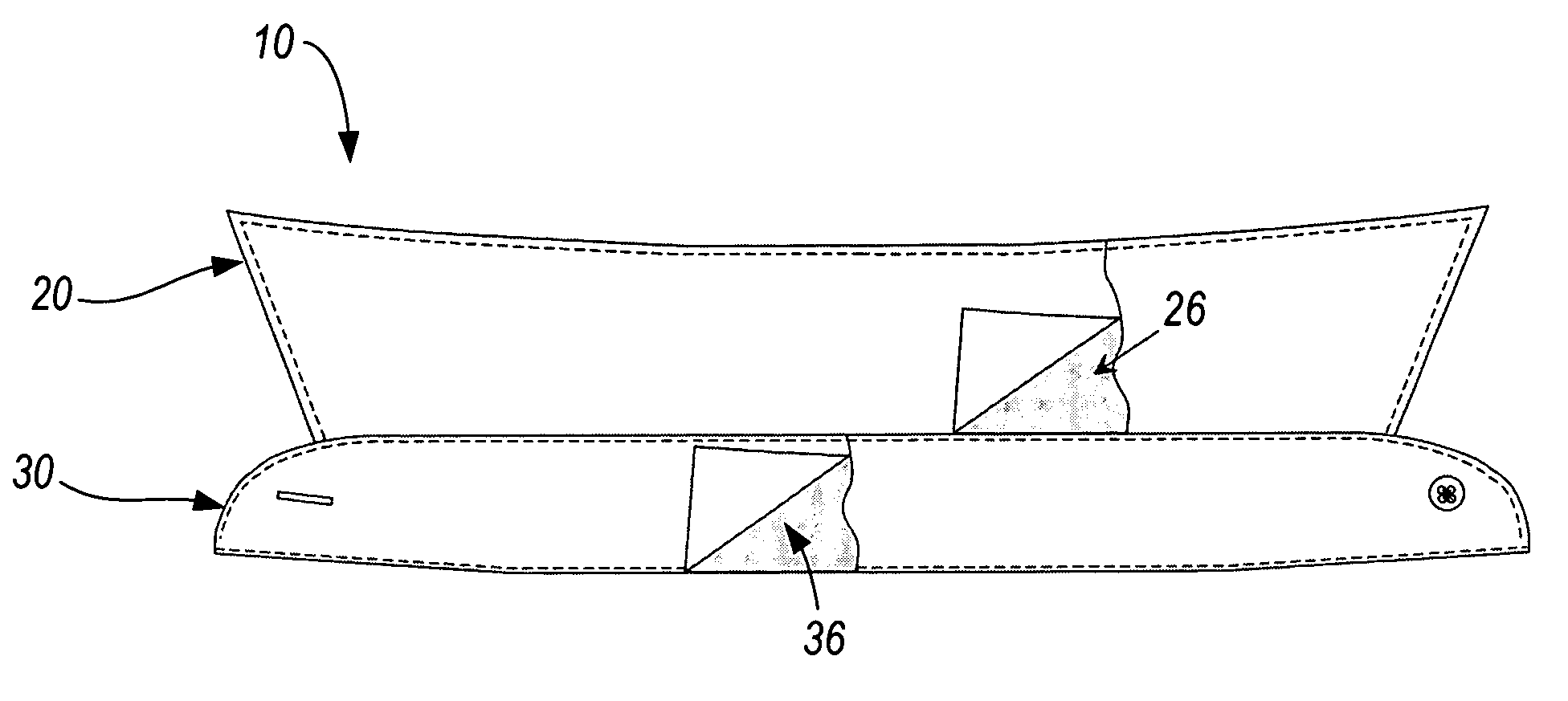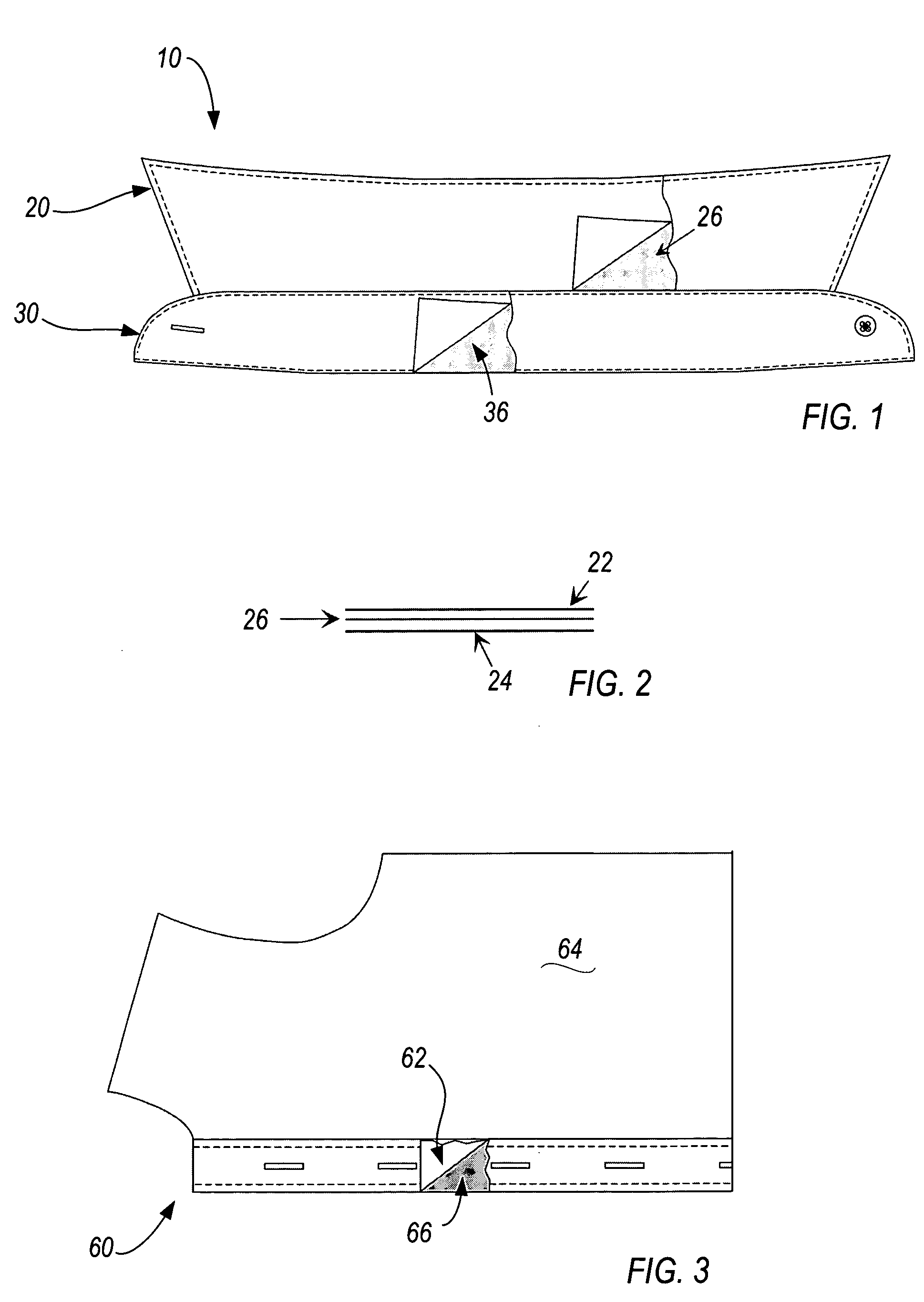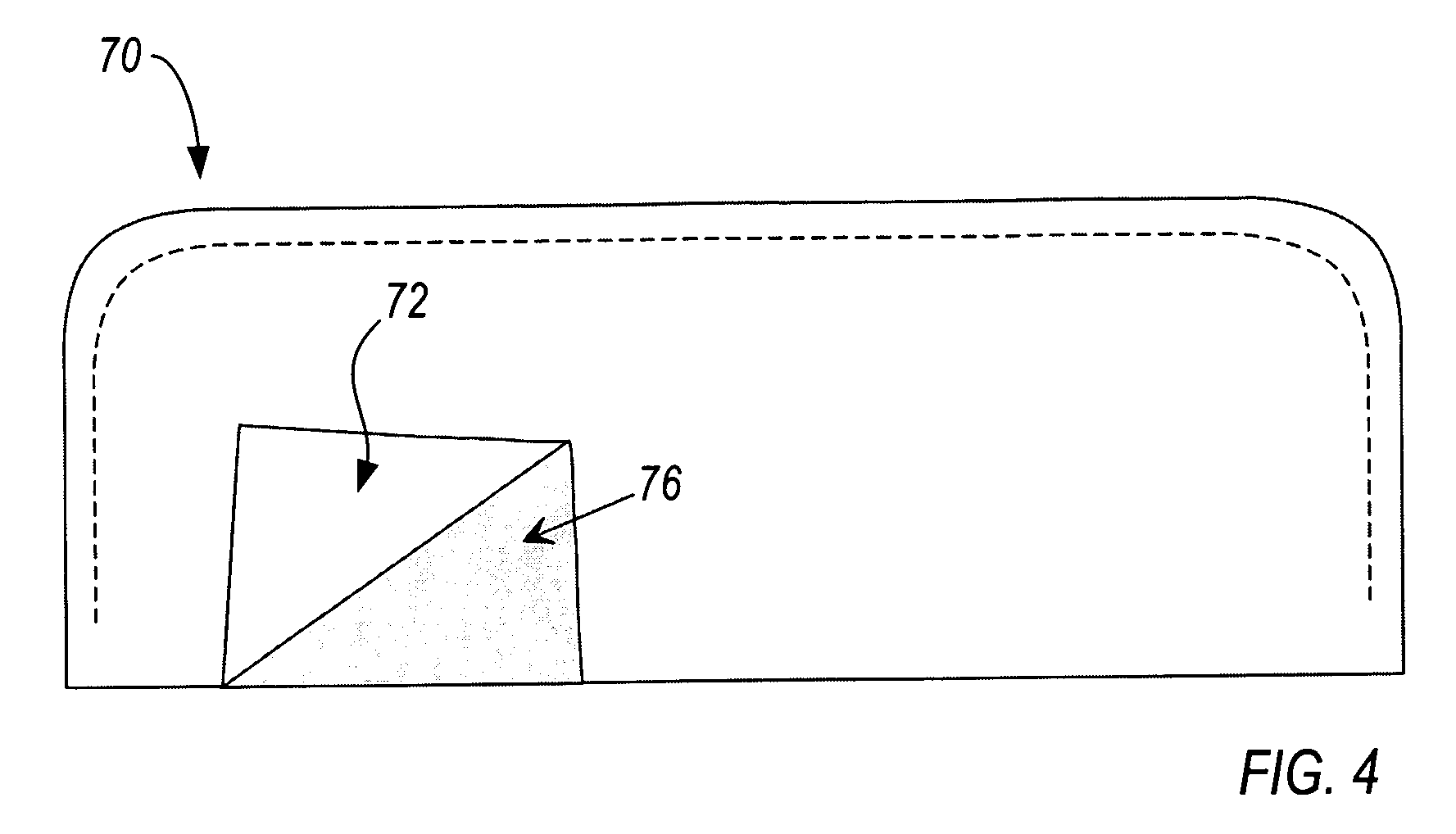Stain resistant interlining for clothing
- Summary
- Abstract
- Description
- Claims
- Application Information
AI Technical Summary
Benefits of technology
Problems solved by technology
Method used
Image
Examples
Embodiment Construction
[0015] This invention relates to garments or garment parts having interlinings that have been specially treated to prevent soil and stains from setting into a garment and / or readily release soils and stains that do occur in the garment. The present invention is contemplated for use with interlinings used on any part of a garment and is not limited to the specific embodiments or applications disclosed herein. The invention is particularly useful for forming neck bands, collars, plackets and cuffs of shirts and waist bands, linings and cuffs of trousers that resist staining or that release absorbed stains from these garment parts.
[0016]FIG. 1 shows a collar 20 and neck band 30 of a shirt (not shown in its entirety). The collar 20 and neck band 30 of the shirt have respective treated interlinings 26 and 36 inserted and secured between the layers of garment fabric forming each garment component. Collars are typically formed by securing (such as by stitching or adhering) together a top ...
PUM
 Login to View More
Login to View More Abstract
Description
Claims
Application Information
 Login to View More
Login to View More - R&D
- Intellectual Property
- Life Sciences
- Materials
- Tech Scout
- Unparalleled Data Quality
- Higher Quality Content
- 60% Fewer Hallucinations
Browse by: Latest US Patents, China's latest patents, Technical Efficacy Thesaurus, Application Domain, Technology Topic, Popular Technical Reports.
© 2025 PatSnap. All rights reserved.Legal|Privacy policy|Modern Slavery Act Transparency Statement|Sitemap|About US| Contact US: help@patsnap.com



